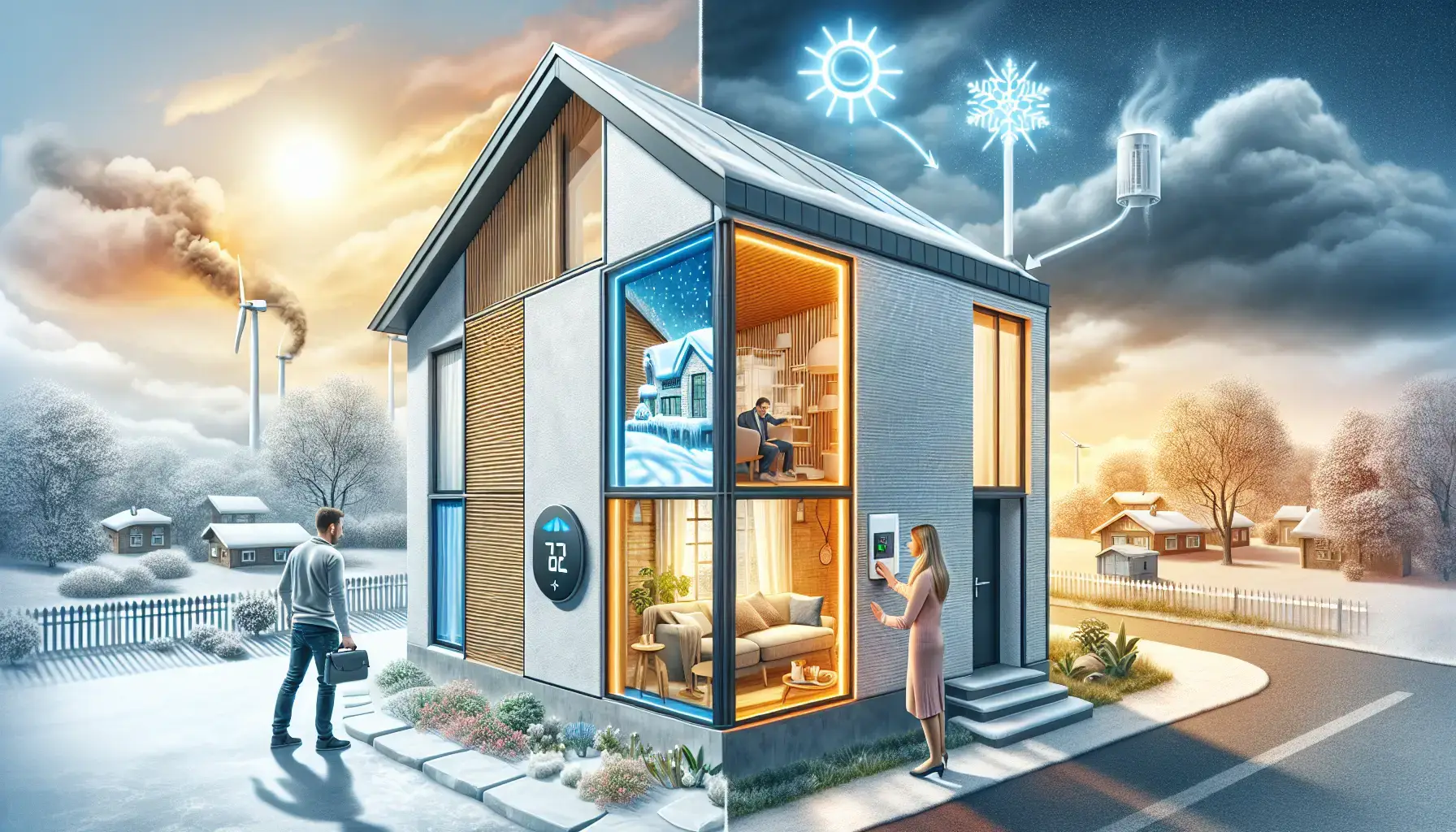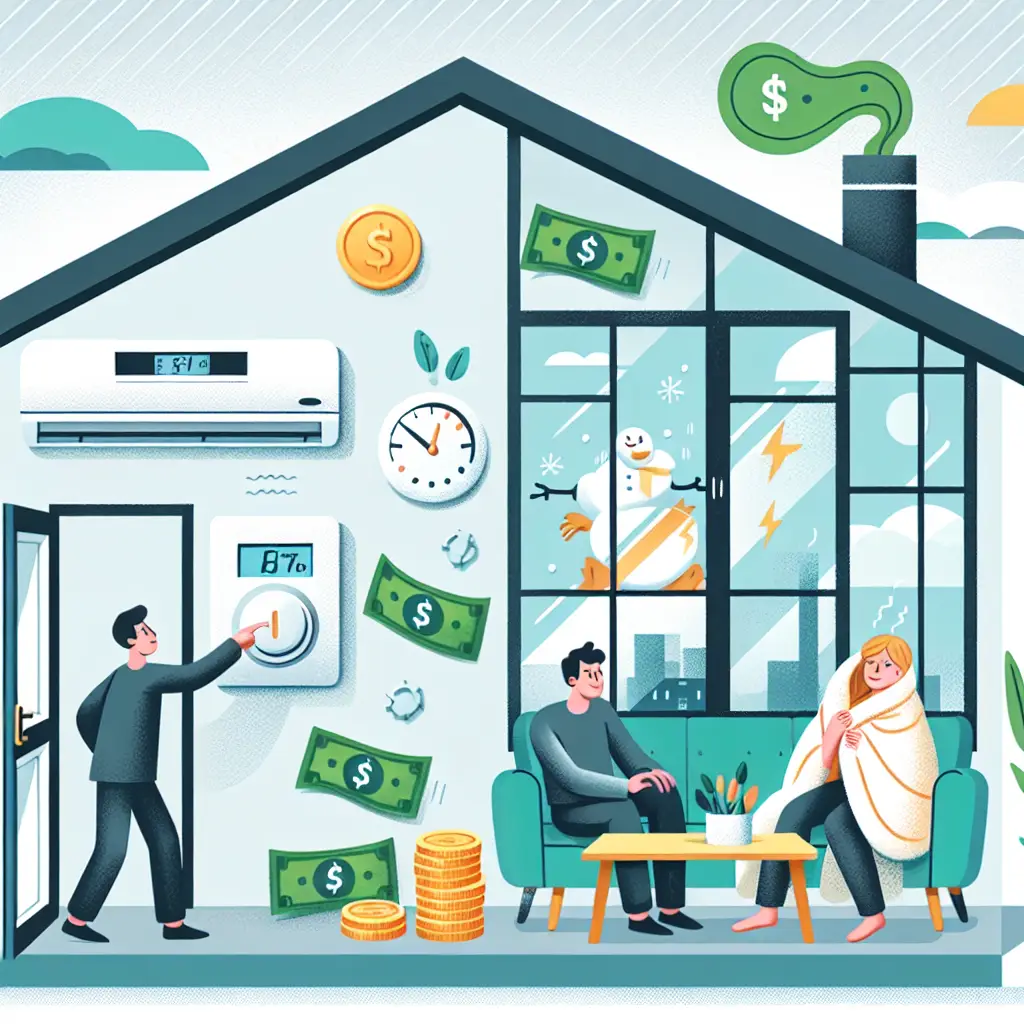The Multifaceted Impact of Airtightness on Heating and Cooling Costs
Airtightness is a significant factor in the energy efficiency of buildings and directly affects heating and cooling costs. By ensuring a building is properly sealed, it is possible to enhance energy conservation, improve indoor air quality, and reduce overall expenses related to energy consumption. In this exploration, we delve into how airtightness impacts various aspects of a building’s energy dynamics and what that means for both occupants and developers alike.
Energy Savings through Airtightness
Airtightness is pivotal in lowering energy consumption for heating and cooling purposes. By eliminating air leaks and enhancing insulation, the potential savings are substantial. For instance, the U.S. Environmental Protection Agency (EPA) highlights that sealing air leaks and augmenting insulation can save an average household approximately 15% on heating and cooling expenses, and around 11% on total energy costs.
- The savings fluctuate across different climate zones, being more pronounced in northern regions compared to southern ones. In Climate Zone 8, which experiences harsher conditions, utility bill savings can soar to 18% for heating and cooling costs annually.
When discussing the relationship between airtightness and energy efficiency, it is essential to acknowledge the interconnection of other factors, such as the type and thickness of insulation, window efficiency, and the building’s overall design. Ratio Seven understands these dynamics and offers services to optimise airtightness, substantially benefitting energy use and cost.
Impact of Air Leakage on HVAC Loads
The presence of air leakage can heavily burden a building’s heating, ventilation, and air conditioning (HVAC) systems. Improved airtightness curtails uncontrolled outdoor air infiltration, enabling retention of conditioned indoor air, and thereby easing heating loads in the winter and cooling loads in the summer.
- By adhering to stringent building standards, such as the EarthCraft or Passive House guidelines, buildings can achieve levels of airtightness surpassing local energy codes. Targets like less than 1 Air Change per Hour (ACH50) can dramatically cut down HVAC loads and facilitate the installation of smaller, more economical systems.
Investing in airtight construction might initially seem costly, yet the long-term benefits, including lower operational costs and extended HVAC lifespan, make it a sound financial decision. Ratio Seven provides insights and services to reach optimal airtightness levels, emphasising both monetary gains and environmental responsibility.
Indoor Air Quality and Health Considerations
While airtightness is advantageous in terms of energy conservation, it also brings about certain challenges concerning indoor air quality (IAQ). Tightly sealed buildings, if not adequately ventilated, can harbour and accumulate indoor pollutants, such as formaldehyde and volatile organic compounds (VOCs).
- Studies indicate a correlation between increasing airtightness and changes in pollutant levels, where improvements can reduce outdoor penetration but may increase indoor pollutant concentrations. For instance, lowering air changes from 11.11/h to 0.75/h can halve PM2.5 levels while potentially raising formaldehyde levels by 169% under closed window conditions.
It is crucial for building solutions to account for effective ventilation systems that maintain healthy IAQ alongside airtight construction. Balanced ventilation strategies, along with utilisation of high-efficiency particulate air (HEPA) filters and integrated air purification, are attainable approaches that Ratio Seven advocates for, ensuring a comfortable and healthy indoor environment.
Thermal Comfort and Enhanced Energy Use
Poor airtightness in a building can lead to inefficient use of energy due to several factors:
- Heat loss occurs directly through air movement.
- The insulation’s thermal resistance decreases with airflow penetration.
- Increased ventilation, particularly in cold and windy scenarios, demands added energy to warm incoming air for maintaining desired comfort levels.
- Airtightness deficiencies in buildings equipped with heat recovery systems can prevent air from efficiently passing through heat exchangers, promoting further energy loss.
Energy recovery ventilation (ERV) and heat recovery ventilation (HRV) systems are beneficial technologies that work synergistically with airtightness to preserve thermal comfort while optimising energy usage. Implementing such systems can alleviate the shortcomings of air leakages, presenting significant energy efficiency opportunities.
Economic and Practical Implications of Airtightness
The economic benefits of enhancing airtightness are clear: reduced energy expenditures and the potential to downsize HVAC systems. Builders and property developers can realise significant savings, as the initial costs associated with air sealing and insulation can be offset by the reduced expense of smaller heating and cooling equipment.
- Research presents considerable discrepancies in energy consumption due to insufficient airtightness, with some buildings requiring up to 45% more energy than those compliant with regulatory standards.
In practice, integrating airtight construction into building designs aligns with sustainable principles, setting a scene for reduced carbon footprints and increased market value. Ratio Seven supports stakeholders with comprehensive airtightness solutions that spell financial savings and advance eco-friendly construction practices.
Achieving optimal airtightness is essential for reducing heating and cooling costs while also improving thermal comfort and maintaining indoor air quality. Although a meticulous balance between energy savings and indoor air quality is necessary, efficient ventilation strategies and precise HVAC load calculations can effectively achieve this equilibrium. Ratio Seven is committed to guiding its clientele towards more energy-efficient and comfortably livable spaces by leveraging airtightness strategies tailored for specific needs.

Frequently Asked Questions (FAQs)
What steps can homeowners take to improve airtightness?
Improving airtightness involves various approaches, including sealing gaps and cracks in the building envelope, using weather stripping on doors and windows, and applying caulking to seams and joints. Additionally, adding or upgrading insulation enhances overall airtightness. Consulting professionals, like those at Ratio Seven, can provide detailed assessments and tailored recommendations that align with energy efficiency goals.
How does airtightness contribute to a building’s sustainability?
Airtight buildings require less energy for heating and cooling, which directly relates to a reduced carbon footprint. By minimising energy use, airtight buildings support sustainable living practices and promote resource conservation. Moreover, they align with green building certifications and can add significant value to properties, both financially and environmentally.
Can improved airtightness affect indoor comfort and well-being?
Yes, improved airtightness can positively affect indoor comfort by maintaining consistent temperatures and reducing drafts. However, it is vital to incorporate effective ventilation systems to manage both humidity and air quality, ensuring a balance between comfort and health. Proper ventilation, ensured by professional design and implementation, can enhance IAQ, ultimately benefiting occupants’ well-being and satisfaction.
Airtightness is a complex yet crucial factor in building design that influences energy efficiency, costs, and indoor environment quality.
Ratio Seven is dedicated to enhancing airtightness standards, offering expert consultancy to meet the dual objectives of economic efficiency and sustainable living.




